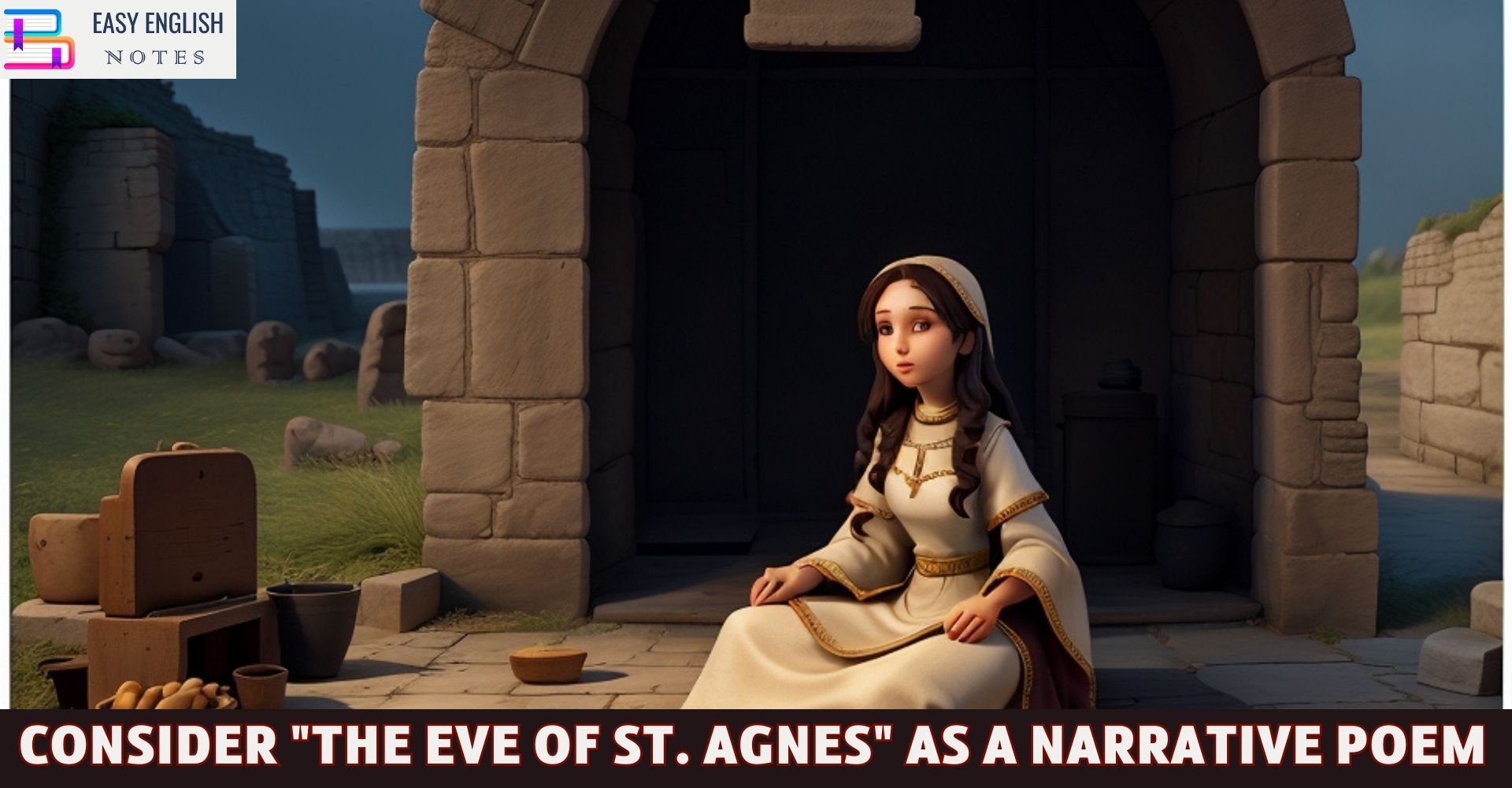Keats wrote a number of long narrative poems, Isabella, Lamia, The Eve of St. Agnes”, and Hyperion. A narrative poem tells a story in verse.
The Eve of St. Agnes” is an unforgettable narrative poem of John Keats, a romantic poet of the second generation. Here the poet narrates romantic love-adventures of Porphyro and Madeline with economy and clarity. The charm of the narration doesn’t fade till the end of the poem.
It is an accomplished fact that Keats made a mark as a successful narrative poet in some of his great poems, as for example “Endymion, Isabella, Lamia and Hyperion but The Eve of St. Agnes is only on immaculate romantic narrative poem. The poet has blended two themes in this poem. One is based on the popular superstition regarding St. Agnes Eve, and the other is the love of an adventurous youth Porphyro for Madeline, the daughter of a hostile person. It has similarities with Shakespearean Romeo and Juliet and Sir Walter Scot’s Lochinvar.
Keats does not, however, treat the subject tragically as one notice in the story of Romeo and Juliet, but quite significantly he makes happy ending of his story, as in Scot’s Young Lochinvar.
The story of the poem hinges on the popular belief that if a pure young girl would perform certain rites on the “Eve of St. Agnes” (20 January), that maiden might gain sight of her future husband in a dream, while sleeping on her back with her hands on the pillow above her head.
The first three stanzas established an atmosphere of bitter cold and old age, in a great medieval castle, St. Agnes Eve-“Ah! bitter chill it was!”
The actual story begins with stanza VI, where Keats narrates the superstitious notions about the festival of Agnes Eve. The narration is so simple and clear that right from beginning to the final lines, a reader is completely absorbed in the story. We are first introduced to the Beadsman. A person employed to say prayers on behalf of the castles owner. The old man fingers grew numb as he was telling his prayer beads. The patient hol, man goes to some hidden part of the castle and does penance of the sins of everyone in the castle, dancing and banqueting. Madeline, the daughter of the Baron who owns the castle, has attended the dance but leaves as soon as she can, having carried out the necessary rituals, in the hope of dreaming of her lover. Porphyro, the young man, who loves her, has come secretly to the caustic and managed to gain entrance with the help of Angela the old nurse, and hide in her bed-chamber, where he sees her come in. Then Angela breathes her last. Thus without wasting any more stanza on the introduction, the poet presents the central theme of the poem. He very skillfully brings together Madeline and Porphyro Madeline is full of this (St. Agnes Eve) whim, and is determined to have a glimpse of her lover in her dream. Now the poet focusses our attention on the activities of Madeline. The romantic narration really begins at this stage and moves on without any interruption.
Also Read :
- Compare Hamlet with Macbeth, Othello and other Tragedies
- “The Pardoner’s Tale” is the finest tale of Chaucer
- Prologue to Canterbury Tales – (Short Ques & Ans)
- Confessional Poetry – Definition & meaning
Continuity and suspense are the inevitable elements of a good narrative and decidedly these two elements are the marked qualities of this poem. The narration completely holds the attention of the readers in stanza IX. where the love-leaden. Porphyro appeared, he entreaties love-loran all the saints to grant him a glimpse of Madeline.
The story now moves on with the description of Madeline’s beauty. After conducting Angela outside her chamber, Madeline comes so hurriedly to her chamber that the taper in her hand goes out. This prepares the ground for the meeting of the lovers in Madeline’s bed chamber. Madeline is unaware of the presence of Porphyro, she redressed herself. Keats gives an aesthetic description of her ravishing beauty, her fair breast as she kneels down in her prayer. She prepares to retire and takes off her clothes one by one. It is at this point that the dream of her future husband turns into reality.
“Into her dream he melted, as the rose Blended its odour with the violet”.
After their confession of mutual love, Porphyro persuades Madeline to escape to a home. He was ready for “Over the southern moore”. The last three verses of this narrative poem describe how Porphyro and Madeline, after a night of violet magnetic storm, escape from the castle.
Keats is an expert story-teller. The plot of the story is well managed. It has a beginning, middle and an end. This story is of as gorgeous stuff as ever romance was composed of. The Eve of St. Agnes is a masterpiece of construction not elsewhere equaled by the poet.
PLEASE HELP ME TO REACH 1000 SUBSCRIBER ON MY COOKING YT CHANNEL (CLICK HERE)












Thanks for wonderful info. What trips can you recommend in 2024? Astro tourism, eco diving, home swapping, train stations are the new food destinations,sports tourism, coolcationing, gig tripping, private group travel?